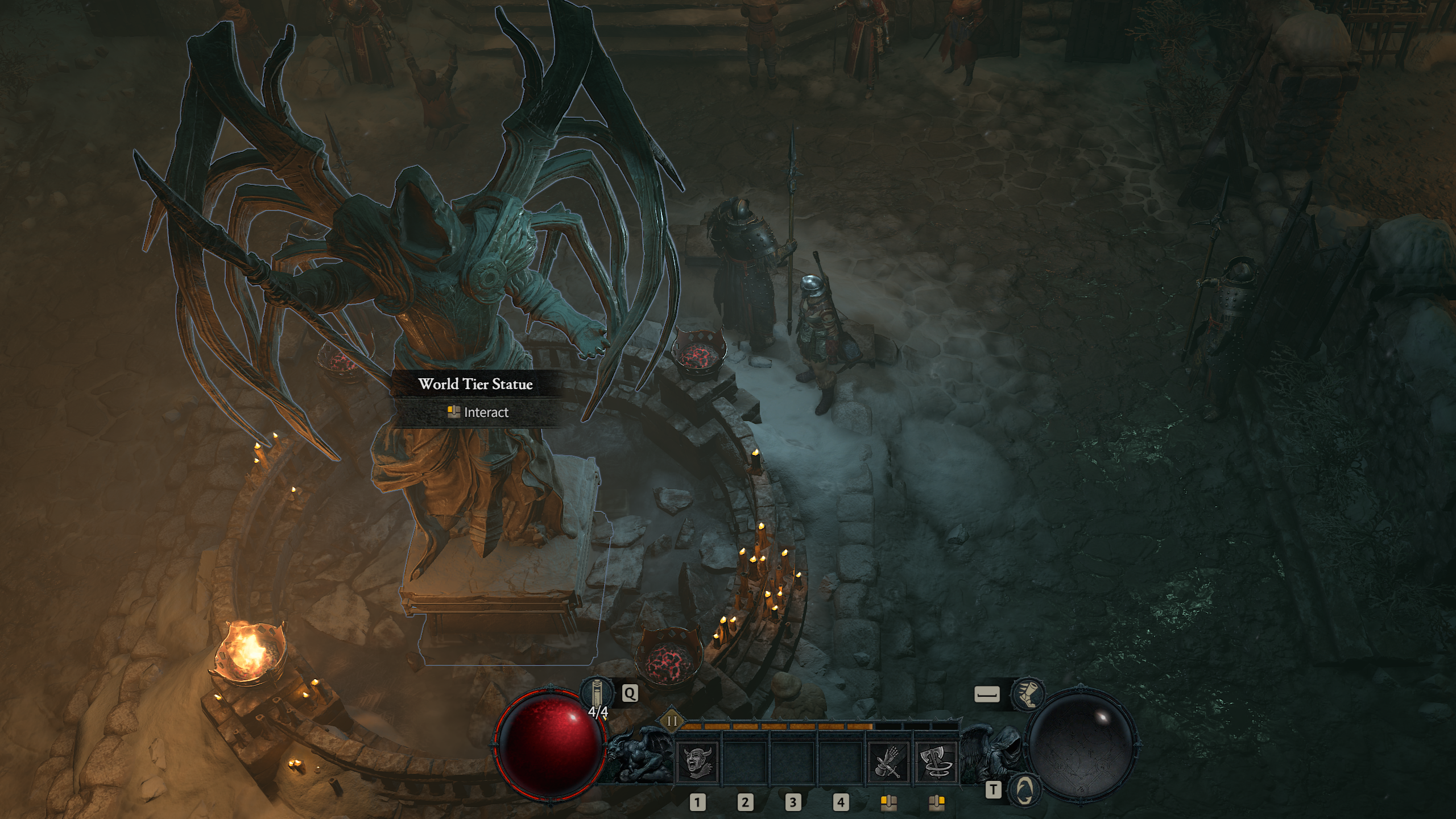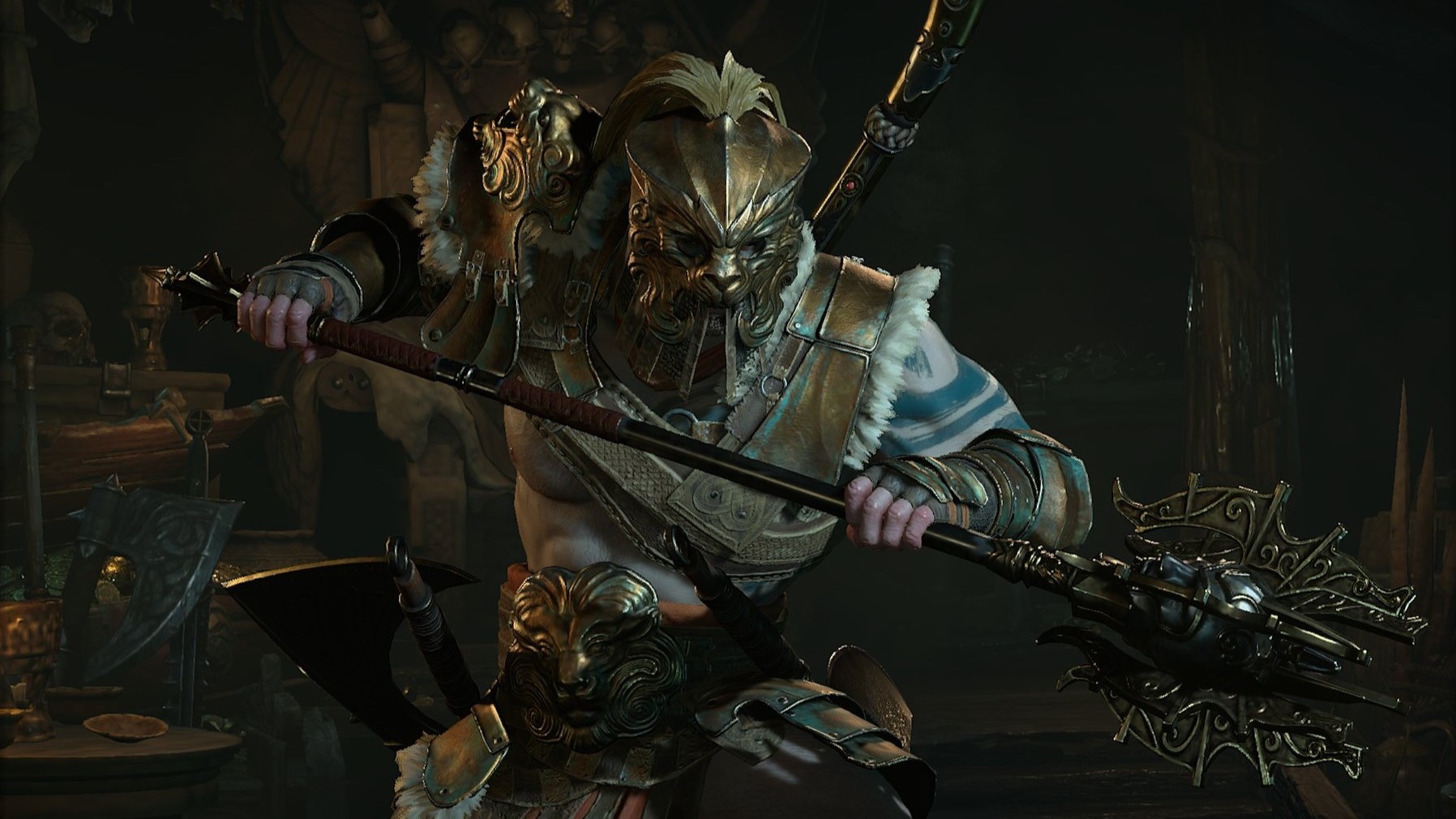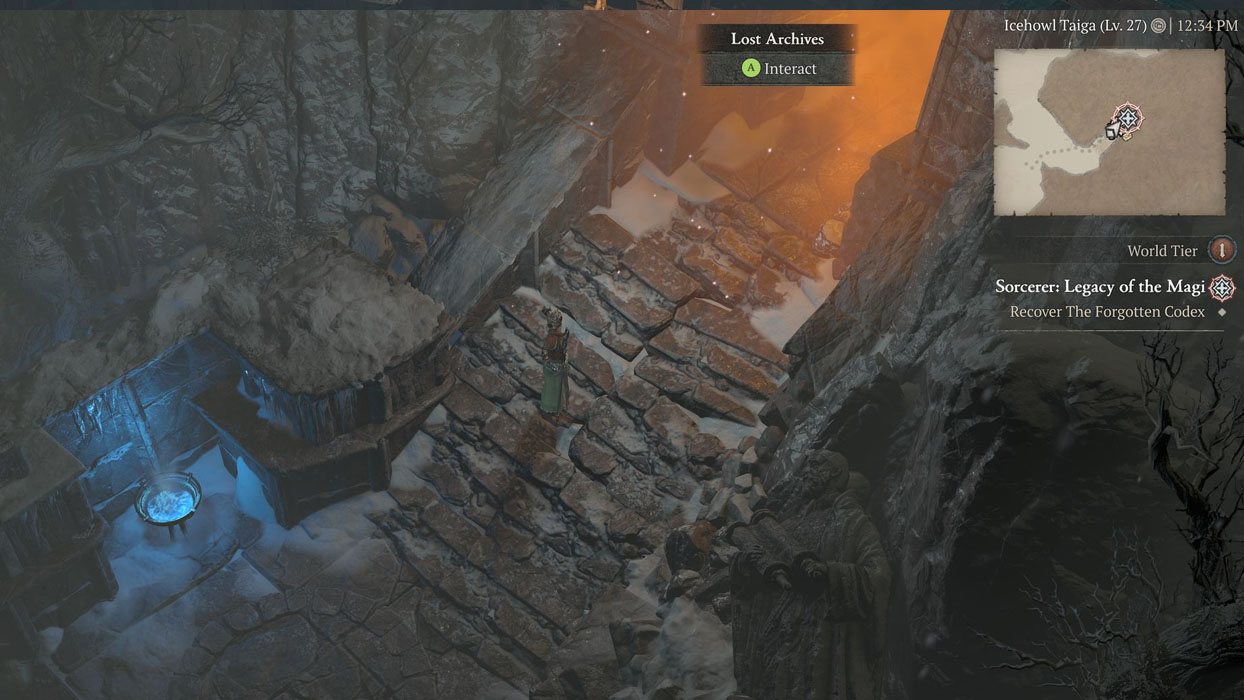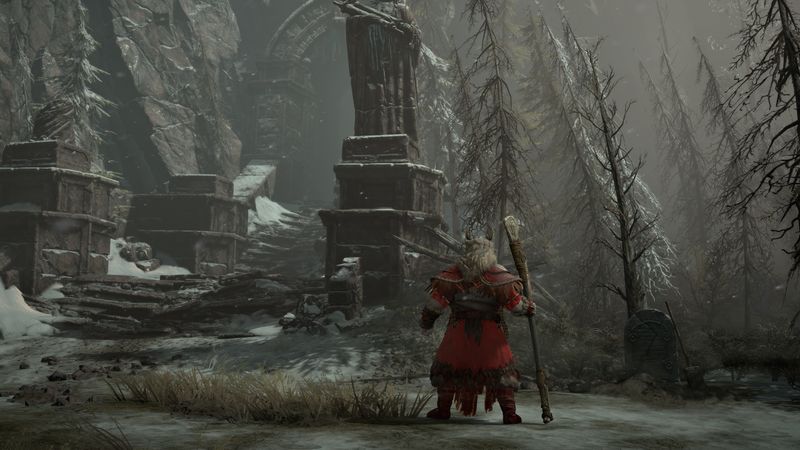Diablo 4 is upon us, heretics, and with the arrival of our savior Lilith, we thought you might need some tips on how to brave the latest incarnation of Sanctuary.
Diablo 4 is an absolute beast of a game. In my Diablo 4 review, I described how I believe it’s quite possibly Blizzard’s most important game since World of Warcraft. I also firmly believe it will supplant all other titles in sales this year, and enjoy a long life of post-launch content updates and expansions. Lest we hope.
In any case, for those who are Diablo veterans or fresh-faced newcomers, I put together a list from my dozens of hours in the review build of Diablo 4 to come up with this list of tips for those getting started.
Do you need to play previous Diablo games before playing Diablo 4?

Diablo 4 is set some decades after the previous game, following a period of relative calm and tranquillity. Sanctuary is a realm beset by danger at all times, but each game takes place during specific eras of demonic uprisings. If you want to catch up on the previous 3 games as well as the wider lore and their books, we have a large article here outlining the entire history and story of the Diablo universe.
Do you need to have played previous Diablo games to enjoy Diablo 4? Very much no. I reviewed Diablo 4 and have completed the previous two Diablo games. There are some powerful nostalgia nods for veterans of the franchise, but the story of Diablo 4 is very much self-contained. It’s rooted in the universe’s wider lore, but it’s all explained in-game to the player. The Wanderer is just as knowledgeable on the deeper workings of the Diablo 4 universe as any new player would be, and the game’s cast explains the situation and the state of the world through Diablo 4’s impressive plot. Side quests in Diablo 4 offer deeper information on the game lore, and the timeline separation from previous titles further its self-contained nature.
1. Picking a Diablo 4 “difficulty”

When you initially create a character in Diablo 4, you are access to choose from a variety of difficulty settings. There’s a “hardcore” setting, as is tradition in the franchise. Hardcore mode is a specific ladder that removes players upon one character death. You get one life, then it’s all over. The added stress and stakes can make Diablo 4 far more exciting, but it’s certainly not for everyone, and perhaps not recommended for new players. Although, the first 1000 players to reach the cap in hardcore mode will be commemorated on a special Diablo 4 statue at Blizzard HQ in America.
Beyond hardcore and non-hardcore modes, you will be asked to choose a world tier. This essentially dictates the pace of the game. World Tier 1 is, of course, the easiest difficulty. You won’t have any trouble getting through the game’s story at a fairly rapid pace in this mode. World Tier 2 boosts your EXP rate and improves the amount of gold you get, while also boosting mob health and their damage output.
I reviewed Diablo 4 entirely on World Tier 2, because I preferred the slower time-to-kill. It made it feel a little more like Diablo 2, and added a little more danger to proceedings, while still being relatively easy. After finishing the campaign around level 50, you unlock two additional difficulties after completing gear-check capstone dungeons, which come with boosted gear drops.
If you’re here just for the story and want an easy ride through the game, World Tier 1 is for you. Also, if you’re a veteran who just wants to get through the game as fast as possible to the more lucrative endgame world tiers, World Tier 1 also doesn’t punish you in any way for playing on that difficulty. World Tier 2 will add some more challenges, and I preferred playing it this way. Strongholds will require decent gear to get through on this World Tier, and bosses become a little more involved and interesting as a result. It is slower, though, and the gear scaling became a real challenge around level 30, before legendaries started dropping at around level 35.
For more details on Diablo 4 World Tiers, the pros and cons, and how to change Tiers, go here.
2. Early Diablo 4 class scaling woes

As I touched on above, if you do play on World Tier 2, or even World Tier 1, you may find that your damage output relative to your survivability becomes a little iffy around level 25-30. I’m not sure if Blizzard plans to tweak this for Diablo 4’s full launch, but at least while playing on World Tier 2, I noticed across multiple characters that damage and survivability scaling became a real issue around these levels. I suspect this is mainly because legendary items and their affixes start dropping around level 35. So, before level 35, you’re really at the apex of what your character is capable of, with the gear available to you.
If you don’t have a strong line-up of synergizing legendary equipment for your core damage skills, combat will become a bit of a struggle. However, once you get over this hump, and start getting legendaries, you will become a god — so struggle on through it.
You can craft your own legendaries by seeking out the “Core” affixes that drop from first-time dungeon completions. I would say that if you find yourself struggling to get through the late 20s early 30s, hunt down a dungeon that drops a decent affix for one of your main attacks, then attach it to a rare (yellow) weapon to turn it into a legendary. You can do this via the Occultist in one of the major cities.
3. Using Diablo 4 gold and materials smartly

I mentioned above that crafting Diablo 4 legendaries can help you overcome the damage scaling hump I identified on World Tier 2 in the late 20s, but you should keep an eye on just how much gold and materials you’re burning through to do it. I wouldn’t bother creating a full set of legendaries for example, I would perhaps just create one weapon, and keep it upgraded until you out-level it.
Why is this? Well, its because materials can be quite hard to come by, at least in the early levels. Gold is also surprisingly scarce initially, although your access to it will ramp up as you get higher quality loot. Selling unwanted legendaries and other gear to vendors will yield tons of gold. Additionally, salvaging them at the Blacksmith will grant you powerful materials for upgrading legendary items. I wouldn’t sink upgrades into too many legendaries while levelling up, because you’ll quickly turn them obsolete. Keep as many mats and gold coins as you can for the times you truly need it. When you die, your items take damage, and need to be repaired. Frequent deaths can quickly burn through your gold stocks. I found myself attempting to butt heads with a Stronghold area that I was woefully undergeared for, smashing my gear to pieces in the process, subsequently bankrupting myself through repairs. It wasn’t hard to get back on my feet, but it’s important to keep an eye on your supplies, at least while levelling. It’s also almost never worth buying equipment from a vendor, so don’t bother. Craft items, or wait for drops instead.
4. Target Diablo 4 dungeons that drop your class core skills

This is an extension of the previous two points, but an important one. Diablo 4’s dungeons are simple randomly-populated linear jaunts through various spooky tombs, ruins, and caves, often with a boss battle at the end. Some of these are the subject of side quests or other activities, particularly in endgame, but while levelling, they also serve a very important purpose.
Unless you’re a completionist or have a side quest incentive to enter a dungeon, there’s no real reason to go through and finish every single dungeon in the game initially. You should, however, try to complete dungeons that offer legendary affixes for first completions. These core drops can be imbued into an item via the Occultist, and can help you get a leg up in damage scaling in situations when you don’t have good gear due to bad luck, or any other reason.
You can see what affixes drop from the world map, and by putting your cursor over each dungeon. Some dungeons drop global affixes that can be used on any class, but most drop affixes that are class-restricted. At the least, it’s worth prioritizing the dungeons that contain affixes for abilities you enjoy using, particularly ones that help your damage scaling. Then, you can simply craft the legendary item you need to boost your class, rather than relying on getting a lucky drop.
5. Why you should consider playing Diablo 4 solo first

I suspect this recommendation for Diablo 4 could prove controversial, and feel free to ignore it for sure — but here’s why I recommend playing Diablo 4 solo first, especially if you’re invested and interested in the game’s storyline.
Playing Diablo 4 in co-op is incredibly fun and will form the basis of its long-term service model, with post-launch expansions, dungeon updates, events, and much more that will keep the game vibrant and interesting for years to come. A lot of this content will of course be multiplayer oriented, with world bosses, strongholds, and other events perhaps optimal to experience with a team of friends.
From level 1 to 50, the game orients around its story, driving you forward from location to location on your hunt for Lilith and her ilk. The way Diablo 4 co-operative play works is, whoever is the party leader, it’s their story you’re experiencing. Unless you plan to play the entire game with the same friend, you could end up receiving spoilers for events and occurrences that happen as part of their story progression, rather than your own.
Additionally, I personally like to experience Diablo games solo the first time through so I can fully immerse myself in the game’s world, play at my own pace, indulge in side quests, and so on, without having to align my progression with friends. Diablo 4 is great for dropping into a friend’s game to help with a dungeon or stronghold unlock, and other things of this nature, but playing Diablo 4 solo, progressing my own story without overlapping my progression with others, was such a tremendous experience. I really think Diablo 4’s story is among the best Blizzard has ever told, and think it deserves your full attention. Action RPGs historically treat story as a secondary thing, but Diablo 4 bucks the trend. If you care about the story, I urge you to fully immerse yourself in it, at least once.
Diablo 4 is a truly immense experience

Diablo 4 launches today, at midnight UK time, June 2nd, 2023. It has been over a decade in the making, after the success of Diablo 3 and those before it. Blizzard is a legendary name with one of the strongest industry legacies to live up to. I expected Diablo 4 to be grand, but never thought to see it make my own personal Blizzard Hall of Fame so easily.
We have tons of additional Diablo 4 guides up on Windows Central (spoiler free) for those looking to get into the game for the first time. And if you drop a comment below, I’ll be sure to answer any burning questions you may have. See you all in hell!




